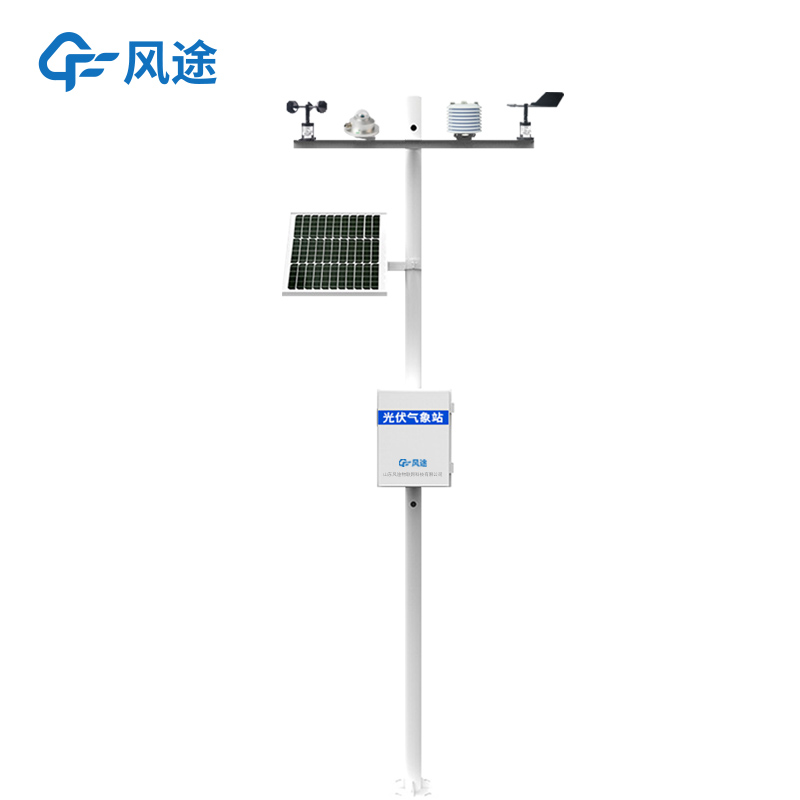Shandong Fengtu IOT Technology Co., Ltd
Sales Manager:Ms. Emily Wang
Cel,Whatsapp,Wechat:+86 15898932201
Email:info@fengtutec.com
Add:No. 155 Optoelectronic Industry Accelerator, Gaoxin District, Weifang, Shandong, China

Sales Manager:Ms. Emily Wang
Cel,Whatsapp,Wechat:+86 15898932201
Email:info@fengtutec.com
Add:No. 155 Optoelectronic Industry Accelerator, Gaoxin District, Weifang, Shandong, China
time:2025-08-08 09:24:54 source:Weather Station viewed:294 time
On the rooftops of distributed photovoltaic power stations and between small photovoltaic arrays, a compact and sophisticated monitoring device is often seen – this is the PV Weather Station. With its small size, flexible deployment, and precise monitoring capabilities, it provides reliable data for the efficient power generation and safe operation and maintenance of small and medium-sized photovoltaic power stations. So, what components make up such an important device?
The PV Weather Station mainly consists of the following parts: sensors, data collectors, power supply systems, and data transmission and display modules.
Sensors are responsible for collecting various meteorological data. The solar radiation sensor takes the lead, as it can accurately measure the total solar radiation intensity, providing a basis for evaluating the power generation of photovoltaic power stations. The integrated temperature and humidity sensor can simultaneously monitor the module temperature and ambient humidity. Module temperature is directly related to power generation efficiency – an increase in temperature will lead to a decrease in efficiency; ambient humidity helps judge the risk of moisture damage to modules, and when humidity is high, attention should be paid to the problem of frame corrosion. The miniature wind speed and direction sensor can detect wind speed and direction, providing a reference for evaluating the impact of strong winds on supports; the rain sensor uses a tipping bucket design to record rainfall, helping assess the cleanliness of photovoltaic panels and preventing dust accumulation from affecting power generation.
The data collector is responsible for aggregating and preliminarily processing the data collected by the sensors. It collects data from each sensor at preset time intervals, organizes the data, calculates important parameters, and stores historical records for easy subsequent query and analysis.
The power supply system ensures the continuous operation of the weather station. The top of the device is usually integrated with a high-efficiency miniature solar panel. Combined with battery energy storage, it ensures stable power supply and uninterrupted monitoring work.
The data transmission and display module is responsible for data presentation and transmission. It is equipped with a miniature LCD display that can real-time show core data such as radiation intensity, module temperature, and wind speed, facilitating on-site viewing. Data transmission supports multiple wireless communication methods to meet the networking needs of small and medium-sized power stations; it also supports IoT transmission, enabling rapid upload of data to cloud platforms. The device has a built-in data storage function, so key information will not be lost even when the network is interrupted, and it will automatically synchronize to the backend system once the signal is restored.

In meteorological observation and environmental monitoring, visibility is a key indicator, which is of great significance to traffic safety, navigation operations, and meteorological research. The Fengtu FT-N10A2 Visibility Sensor features a stainless steel body design, allowing it to be used with c...
Highway tunnels, as special sections of the highway network, are a unique type of tubular structure. The internal space is relatively narrow, with drastic changes in light and poor visibility. Due to the significant difference in illumination inside and outside the tunnel, drivers are extremely vuln...
Highway visibility monitoring is a crucial part of ensuring road traffic safety. With the development of mobile Internet technology, the Road Weather Information System has achieved a functional leap from the computer terminal to the mobile phone terminal.The traditional computer - based monitoring...
Mosquito Killing Lamp is an agricultural plant protection device that integrates physical pest trapping, intelligent pest monitoring, and remote data management. It utilizes a specific spectrum light source to attract pests, kills them with a high-voltage electric grid, and transmits pest data in real time using IoT technology, achieving precise monitoring and green control of pest populations....